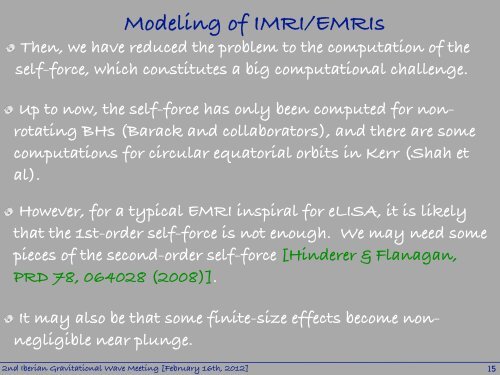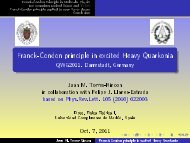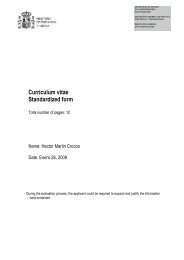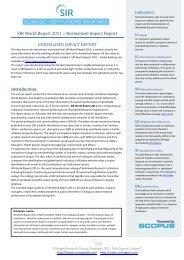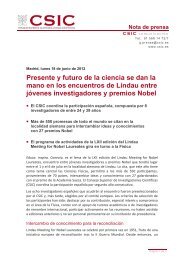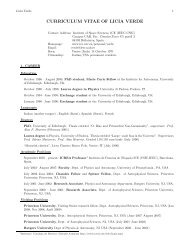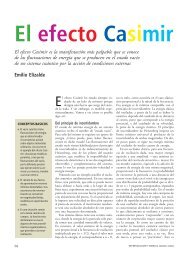On the modeling of Intermediate- and Extreme-Mass-Ratio Inspirals
On the modeling of Intermediate- and Extreme-Mass-Ratio Inspirals
On the modeling of Intermediate- and Extreme-Mass-Ratio Inspirals
You also want an ePaper? Increase the reach of your titles
YUMPU automatically turns print PDFs into web optimized ePapers that Google loves.
Modeling <strong>of</strong> IMRI/EMRIs<br />
Then, we have reduced <strong>the</strong> problem to <strong>the</strong> computation <strong>of</strong> <strong>the</strong><br />
self-force, which constitutes a big computational challenge.<br />
Up to now, <strong>the</strong> self-force has only been computed for nonrotating<br />
BHs (Barack <strong>and</strong> collaborators), <strong>and</strong> <strong>the</strong>re are some<br />
computations for circular equatorial orbits in Kerr (Shah et<br />
al).<br />
However, for a typical EMRI inspiral for eLISA, it is likely<br />
that <strong>the</strong> 1st-order self-force is not enough. We may need some<br />
pieces <strong>of</strong> <strong>the</strong> second-order self-force [Hinderer & Flanagan,<br />
PRD 78, 064028 (2008)].<br />
It may also be that some finite-size effects become nonnegligible<br />
near plunge.<br />
2nd Iberian Gravitational Wave Meeting [February 16th, 2012] 15


